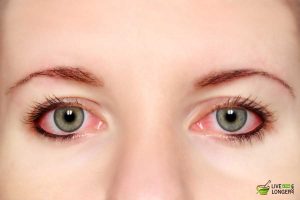
Pink eye can affect one or both eyes to any age group. It lasts for around 7 to 10 days. They are neither fatal nor do they cause any damage to your vision. However, there might be a constant irritation. To help relieve the discomfort, a few home remedies for pink eye (or conjunctivitis) can help. Before we explain them in detail, know its symptoms and causes first.
Symptoms of Pink Eye
The symptoms of pink eye (if it is viral) can last for a week or two and can become chronic. Pink eye caused by both viral and bacterial infections are extremely contagious. It is highly advised to stay at home until the symptoms diminish.
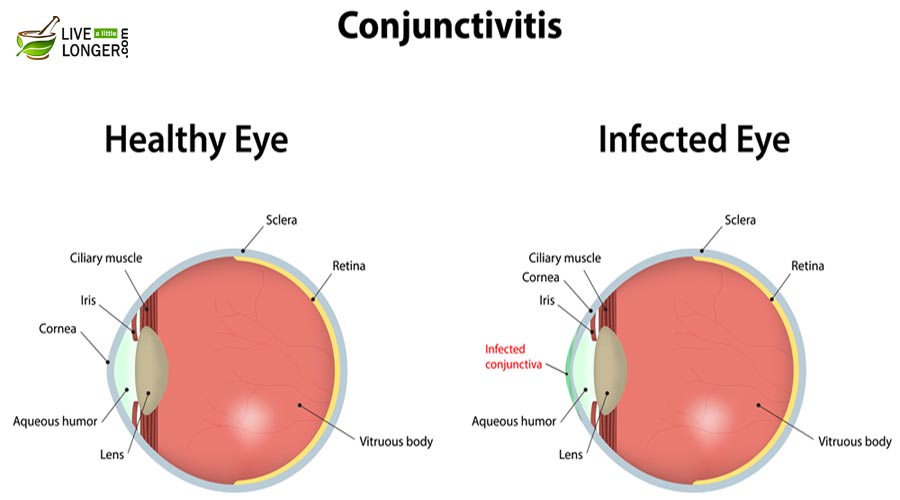
The common signs and symptoms of a pink eye are:
- Pus or water discharge from one or both eyes
- Runny nose
- Cough
- Eye pain
- Itchy eyes
- Cold
- Earache
- Sinus congestion
- Tearing
- Eye redness
- Swollen lymph nodes
- Swollen eyelids
Causes of Pink Eye
Some of the factors that can cause pink eye are:
- Bacterial or Viral infections
- Allergy-inducing agents
- Toxic or Chemical substances
- Chlamydia
- Dry eyes (due to lack of moisture or prolonged exposure to sun or wind)
- Smoke or fumes
- Foreign objects
4 Types of Pink Eye Infections
Pink eye can be classified into four types:
1. Bacterial and Viral Pink Eye
The bacterial and viral pink eye can affect one or both the eyes. Viral conjunctivitis is usually accompanied by a watery discharge from eyes, and a thicker discharge accompanies bacterial conjunctivitis.
Both the infections can be related to colds or respiratory infections, like a sore throat Both these infection types are highly contagious and is transferred when coming in direct or indirect contact with the eye discharge of the affected person. Bacterial and viral conjunctivitis affects both adults and children. However, children can suffer from bacterial pink eye more often.
2. Allergic Pink Eye
Allergic conjunctivitis is usually accompanied by symptoms like swollen eye membranes, tearing, and severe itching. Mild level of eye pain could be experienced. Most common reasons of allergic conjunctivitis include dust, animal dander, and seasonal pollens. This type of eye infection is seasonal and can be seen with allergic symptoms like scratchy throat, itchy throat, or sneezing.
3. Chemical Pink Eye
Chemical conjunctivitis occurs when any irritation-inducing substance gets into the eyes. Some of the chemicals that cause pink eye are:
- Smoke
- Smog
- Household cleaners
- Industrial pollutants
- Foreign objects in the eyes
- Any type of Sprays
Note: Washing the eyes with excessive amounts of water is very important if a chemical substance gets into your eyes.
4. Chlamydia Pink Eye
Chlamydia pink eye infection is a very rare case of a bacterial pink eye. It can affect both children and adults. Chlamydia conjunctivitis in teens and adults can be sexually transmitted.
10 Best Home Remedies For Pink Eye
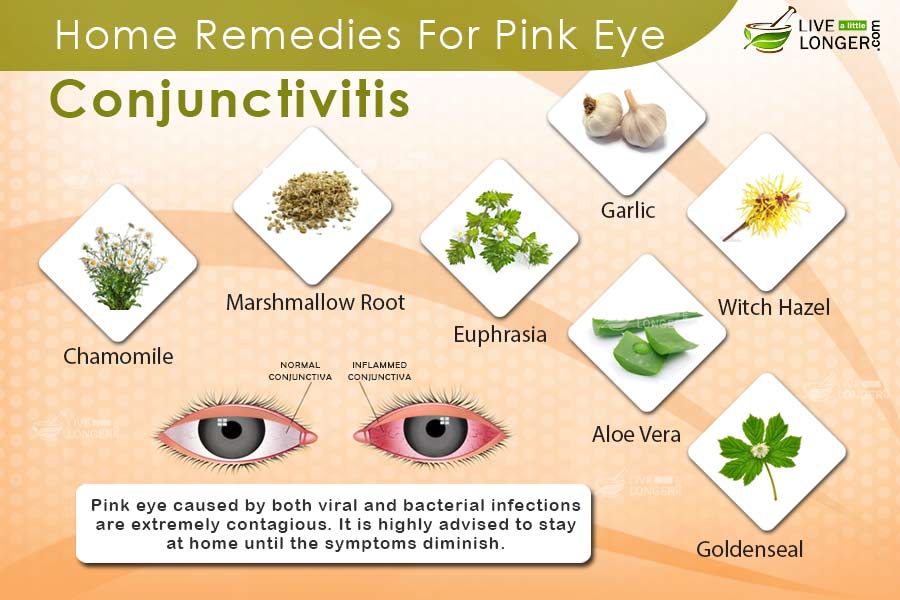
10. Saline Solution
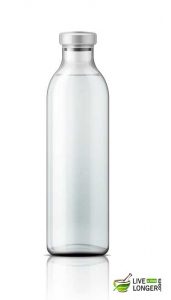
Using saline solution is one of the simple and popular ways to treat pink eye at home. Saline solution is not only used for eye infections and contact lens care but can also be used as a nasal rinse and for wound irrigation. It is even used in a neti pot to treat sinus infections. Making DIY saline solution at home is simple, as it takes only two basic ingredients — water and salt.
Note: Use sea salt for getting instant results. To treat Pink eye with Saline Solution, follow the steps given below:
- Step 1: Add one to one-half tablespoon of salt to one cup of boiling distilled water.
- Step 2: Let it cool for some time and then use it as eyewash with the help of a dropper or an eyecup.
- Step 3: Use the solution to wash your eyes several times a day.
How Does This Work?
The combination of sterile water and sodium chloride content of the salt makes it a great disinfectant, which helps to cure pink eye and ease off the symptoms.
Saline Solution Is Not Good, If:
- You are taking any dietary supplement, herbal preparation, or any other medication.
- You are pregnant or breastfeeding (consult your doctor beforehand).
- You have any allergies to certain types of foods, medications, or other substances.
9. Goldenseal
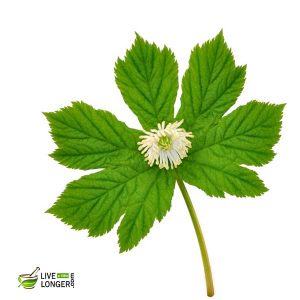
Goldenseal is a herb that belongs to eastern woodlands and grows well in rich soil. It is a great over the counter medicine for pink eye.
The herb is quite rare due to its immense popularity for treating various ailments. It belongs to the family “Echinacea.”
It is suggested to use the root or the flowers of goldenseal plant. If you cannot find any of these in you locality, go with organic products of Echinacea. The medicinal and antibiotic properties are good for treating bacterial or viral conjunctivitis. Goldenseal can be used to treat conjunctivitis in pets as well. To treat Pink eye with Goldenseal, follow the steps given below:
- Step 1: Add ½ teaspoon of salt (Himalayan salt or sea salt) and add goldenseal root to a cup of distilled water.
- Step 2: Boil the mixture and allow it cool.
- Step 3: Strain the liquid and use it as eyewash once or twice a day.
Note: Since goldenseal is very strong, use it in moderate.
You can also treat conjunctivitis internally by consuming a tea made of goldenseal and raspberry leaves (astringent). Drink a cup of this tea, thrice a day. Direct application of the goldenseal powder on the affected area may also help curing the symptoms of pink eye (not recommended for treating children).
How Does This Work?
Goldenseal contains berberine, which is an effective antibiotic that fights against strep and staph infections (two common reasons of pink eye).
Goldenseal Is Not Good, If:
- You are pregnant or breastfeeding (consult your doctor beforehand).
- You are administering for children.
- You have poor digestion or metabolism.
- You are taking blood pressure medications.
- You are taking medications for blood clot or bleeding disorders.
8. Apple Cider Vinegar
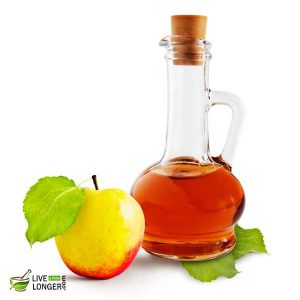
Apple cider vinegar has many medicinal properties and is a great cure for pink eye. It is a highly effective viral, bacterial slayer and reduces the itchiness from your eyes.
Consuming apple cider vinegar will remove any infections or microbes from your inner body parts. It is recommended to use organic and unpasteurized apple cider vinegar for the treatment of pink eye. To treat Pink eye with natural Apple Cider Vinegar, follow the steps given below:
- Step 1: Mix 1 tablespoon of apple cider vinegar with one cup of filtered water.
- Step 2: Now dip a clean towel in the mixture and gently apply around the surface of the infected region.
- Step 3: You can also use it as an eyewash.
You can even make eye drops by diluting apple cider vinegar in filtered water. Put 2 drops in the infected eye every hour. This might sting a bit, so use carefully.
How Does This Work?
Apple cider vinegar is made by fermenting the juice of crushed apples. It contains malic acid and acetic acid, which fights effectively against the virus, bacteria, and fungi.
Apple Cider Vinegar Is Not Good, If:
- You have gastrointestinal issues.
- You have diabetes.
- You are pregnant or breastfeeding (consult your doctor beforehand).
- You are allergic to its compounds.
- You have dental concerns.
7. Euphrasia Leaves (Eyebright)
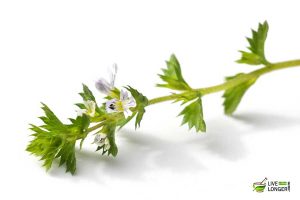
Euprashia is also known as Eyebright. It has multiple medicinal properties and can naturally cure eye infections. According to scientists, Eyebright has several organic, nutritional, and chemical properties that can treat more than just eye infections. It contains
It contains Vitamins (B, C, E), alkaloids, beta-carotene, antioxidants such as ferulic acids, caffeic acids, flavonoids, defensive compounds, iridoid glycosides, volatile oils, and tannins. To treat Pinkeye with Eyebright, follow the steps given below:
- Step 1: Stew a teaspoon of Eyebright herb in a cup of hot water.
- Step 2: Allow the mixture to cool down and then strain.
- Step 3: Use cool rose water to dilute the strained tea.
- Step 4: Use the mixture as an eyewash and wash your eyes every 4 hours to get rid of pink eye symptoms.
Note: Herbal experts suggest using this topical method only for a short term. Due to potential contaminations in homemade non-pharmaceutics Euphrasia tea preparations, supervision of an herbal expert is highly recommended. Also, consuming Eyebright tea and taking Eyebright tablets or capsules may help to quicken the healing process.
How Does This Work?
The anti–inflammatory and antihistamine properties of the herb act as astringents to kill the bacteria/virus that causes the infection.
Eyebright Is Not Good, If:
- You are pregnant or breastfeeding (consult your doctor beforehand).
- You have diabetes.
- You are scheduled for surgery in two weeks.
6. Witch Hazel
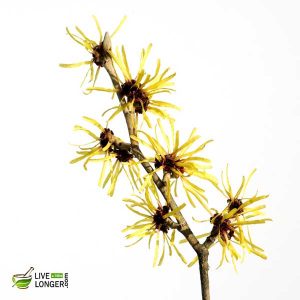
Witch Hazel is a modern astringent obtained from the leaves and barks of witch hazel shrub — Hamamelis virginiana.
It is widely used for treating skin problems and tumors but is used for more than just for natural skin care and beauty.
Witch hazel has gained worldwide popularity for its natural skin toning and cleansing properties. It can treat inflammations too. To treat Pink eye with Witch Hazel, follow the steps given below:
- Step 1: Dip a clean cotton ball or gauze pad in witch hazel extract.
- Step 2: Apply it on your eyelid and underneath you eyes.
- Step 3: This will help reduce the itching and swelling of your eyes.
How Does This Work?
Witch Hazel contains astringent properties, called tannins, which fights infections and help reduce swelling as well as irritation.
Witch Hazel Is Not Good, If:
- Your skin is prone to allergies.
- You are pregnant or breastfeeding (consult your doctor beforehand).
5. Chamomile Tea
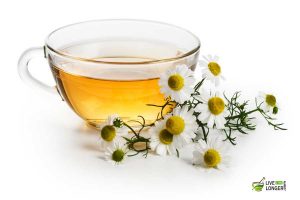
Chamomile is one of the most well-known herbs for its anti–inflammatory, anti–irritant, and anti–microbial properties. Apart from treating conjunctivitis, it also cures puffy eyes and dark circles.
Chamomile tea is highly effective for natural conjunctivitis treatment or red eye problems and is being used since years. It is something you can easily find at a health & food shop, a supermarket or a chemist store.
To treat Pink eye with Chamomile, follow the steps given below:
- Step 1: Boil 1 ½ cup of filtered water and add one heaped spoon of chamomile tea or a chamomile tea bag to it.
- Step 2: Let it brew for about five minutes.
- Step 3: Strain it or remove the tea bag and allow it to cool down.
- Step 4: Directly apply the tea bag onto your eyelids and repeat it for a few times a day.
- Step 5: You can even use a cotton pad to wipe your eyes with it. Do this once in every 1 – 2 hours in a day.
- Step 6: Usually the infection will go away within 24 to 36 hours.
- Step 7: You can also sleep with a cotton pad “eye patch” to get rid of the infection.
How Does This Work?
Chamomile contains several types of flavonoids and medicinal properties such as astringent, anti-bacterial and anti-inflammatory. These properties help reduce the swelling and irritation by decreasing the production of chemicals called histamines, prostaglandins, and leukotrienes. These are the chemicals released by your body to create a swelling response in the affected area.
Chamomile Is Not Good, If:
- You are pregnant or breastfeeding (consult your doctor beforehand).
- You are allergic to ragweed or other such pollens.
- You are going to have surgery in next two weeks.
- You have hormone-sensitive ailments such as ovarian cancer, uterine cancer, breast cancer, uterine fibroids, or endometriosis.
- You are taking any birth control or contraceptive medications.
- You are taking any sedative medications.
4. Marshmallow Roots
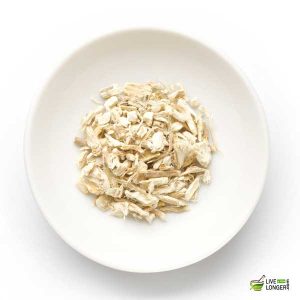
We will make it very clear to you that the Marshmallow we are talking about here is not those sweet, fluffy candies or the ones you roast at campfires. Marshmallow, scientifically called Althaea officinalis, is an African based demulcent herb.
The Egyptians first discovered the medicinal properties of this plant. The herb is widely popular in the treatment of dry coughs and sore throat.
It is also used to treat other health issues like stomach ulcers, skin disorders, respiratory problems, heartburn, ulcerative colitis, indigestion, and Crohn’s disorder, heartburn, ulcerative colitis, indigestion and Crohn’s disorder. To treat Pink eye with Marshmallow Root, follow the steps given below:
- Step 1: Boil marshmallow roots in a cup of filtered water to derive its extract.
- Step 2: Allow the water to cool. Use this as an eyewash.
- Step 3: Repeat the process several times a day for better results.
How Does This Work?
Marshmallow roots contain a biochemical called mucilage, which exhibit flavonoids and anti-inflammatory properties. The flavonoids help to reduce the inflammation in the eyes caused by conjunctivitis while the mucilage helps prevent any further damage. It also helps in promoting the phagocytosis process, in which all the virus ad bacteria are removed.
Marshmallow Root Is Not Good, If:
- You are pregnant or breastfeeding (consult your doctor beforehand).
- You have diabetes.
- You are undergoing surgery in two weeks.
3. Garlic
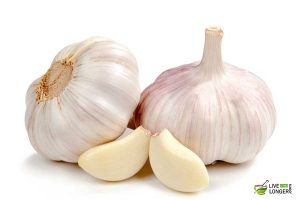
Pink eye needs to be treated from the inside of your body too. The susceptibility to inflammation and infection often shows the level of your body’s congestion and resistance. Therefore, it is necessary to treat conjunctivitis internally. For this, you can use a common ingredient found in everyone’s kitchen – “garlic.” Garlic is one of the most effective natural antibiotics used for treating many types of diseases. However, it can treat conjunctivitis, both internally and externally.
For this, you can use a common ingredient found in everyone’s kitchen – “garlic.” Garlic is one of the most effective natural antibiotics used for treating many types of diseases. However, it can treat conjunctivitis, both internally and externally. To treat Pink eye with Garlic, follow the steps given below:
- Step 1: Peel one garlic clove and extract the juice from it.
- Step 2: Apply one drop of it directly on the infected eye or just rub it on the eyelids.
- Step 3: Repeat the same for a few times a day.
- Step 4: Works well against bacteria and virus.
Note: The juice might sting a bit, so use in moderation and carefully.
How Does This Work?
Garlic has an enzyme called allicin, which is a veritable anti-inflammatory and antibiotic compound. This helps to reduce the swelling and to ease the pain and irritation. The several sulphur compounds of the garlic act as a detoxifying agent and helps to enhance your immune system.
Garlic Is Not Good, If:
- You are pregnant or breastfeeding (consult your doctor beforehand).
- You have a bleeding disorder.
- You have low blood pressure.
- You have stomach disorders and indigestion.
- You are undergoing surgery in two weeks.
2. Castor Oil

Castor oil is derived from castor seeds (found in the fruits of castor plant, Ricinus Communis). Castor oil is used for treating various types of ailments such as rheumatism, constipation, menstrual disorders, lactation, gastrointestinal problems, anti-inflammatory, labor stimulant, anti-disinfectant, asthma, skincare, and hair care. It even has industrial usages, like lubricating machines, etc.
On the other hand, a powerful toxin called ricin is also made from certain protein seen in the castor seeds, which is used for chemical warfare. The anti-inflammatory properties of castor oil make it an effective treatment for conjunctivitis.
To treat Pink eye with Castor Oil, follow the steps given below:
- Step 1: Apply a few drops of castor oil to the infected eyes directly.
- Step 2: It helps sooth the irritation as well as removes the infection.
- Step 3: You can also apply castor oil generously over the upper and lower eyelids.
- Step 4: Rest and let it get into your eye by itself and do its job of curing the infection.
Note: Applying castor oil to eyes might temporarily fog your vision, so it is suggested to do it before sleep. It is also advised to use this method as soon as the early signs of pink eye appear.
How Does This Work?
Castor Oil has several disinfectant properties, which helps you fight against the microbes that cause pink eye. It also has a biochemical called undecylenic acid, which helps prevent further growth of the microbes.
Castor Oil Is Not Good, If:
- You have any symptoms of appendicitis.
- You are pregnant or breastfeeding (consult your doctor beforehand).
- You have allergic reactions to castor oil.
1. Aloe Vera

Aloe Vera is like the “King” of all natural pharmaceuticals. No matter, what the ailment is, this green plant always makes it to the list. It has some amazing antibacterial, antifungal and antiviral properties, which work well against the pink eye.
Aloe Vera is one of the proven and most popular home remedies for pink eye (or conjunctivitis). Most eye drops have Aloe Vera in them to soothe the inflammation. To treat Pink eye with Aloe Vera, follow the steps given below:
- Step 1: If you have an Aloe Vera plant in your backyard, just cut a small leaf from it.
- Step 2: Apply a couple of drops (of the gel or juice) into each eye.
- Step 3: Repeat the same for several times a day.
- Step 4: You can also soak the gel peeled from freshly cut leaves in a cup of boiled and later cooled water and use it as eyewash.
- Step 5: If you cannot get Aloe Vera, you can also use store bought aloe gel (read the instructions and side effects before using).
Note: Not recommended for treating children.
How Does This Work?
Aloe Vera contains amodin and aloin, which has antiviral and antibacterial properties. They are known to be harmful against viral, bacterial, and fungal infections, which in turn helps reduce the symptoms of conjunctivitis.
Aloe Vera Is Not Good, If:
- You are trying to get conceive or already pregnant or to treat conjunctivitis (consult a doctor beforehand).
- You have diabetes.
- You have intestinal disorders.
- You have kidney disorders.
- You have haemorrhoids.
- You are scheduled for surgery in two weeks
Some Tips To Avoid The Pink Eye
Warm Compress:Giving a warm or cold compress with a clean towel will be soothing for the pink eye irritations. Warm-compress helps in discharging build-ups blocking the eye blood vessels or removes the crust that forms on the eyelashes/eye-lids. Cold compress can relieve you from the itchiness and bring down inflammation but, Warm compress is always a better option.
Based on your infection, you ophthalmologist will recommend the compress (warm/cold) so follow that for best results. You can do it 3-4 times per day.
While compress, avoid rubbing or touching your eyes which will only worsen the condition and that too if you have allergic conjunctivitis, then maintain a clean cloth and never touch/rub the eye at any cost.
No Contact-Colored Lenses:Once diagnosed with or you start getting the symptoms for viral/bacterial conjunctivitis, then do not wear contact/colored lenses and use spectacles for ten-15 days. Doctor will definitely recommend this. Wearing contact lenses will worsen the condition as it’ll be irritating and can cause further infections (even if it’s a clean lens).
No Eye-Makeups: Eye makeups will worsen the condition so avoid them. For a week, avoid heavy cosmetics, perfumes, harsh shampoos-conditioners, creams and other chemicals from getting contact with your eye and skin around.
Rinse your Eyes: When your Eye meets any allergens/pollutants, the body releases Histamine which indicates you through itchiness, redness and tears. So rinse your eye with clean water as soon as possible to avoid further complications. You can rinse with lukewarm water to feel more comfortable.
Avoid These: Don’t engage yourself more outside during windy season which carries lots of micro dusts, pollens, allergens etc. which will cause severe eye problems. If you’re prone to allergic conjunctivitis then you should be very careful before you step out from your home. Safeguard yourself.
- Use cold or warm compress on the eyelids.
- Apply brewed, cooled green or black tea bags.
- Use a saline solution to wash your eyes.
- For babies, refrigerate breast milk and dab it on the eyes using a cotton ball.
- Boil fennel seeds in a cup of filtered water, strain and cools it. Use this as an eye wash to ease the pain.
To reduce the period of infection and promote fast healing, add these foods to your diet:
- Raw juices from vegetables like spinach and carrot.
- Foods that are rich in Vitamin A – pumpkin, papaya, butter, mango, whole milk, carrot, tomato, etc.
- Foods that are rich in Vitamin B2 – banana, almonds, green leafy vegetables, citrus fruits, milk, etc.
When To See A Doctor?
If your pink eye doesn’t seem to cure even after a week or you are experiencing critical symptoms like sensitivity to light, blurred vision, discomfort, and severe pain, seek immediate medical assistance.


